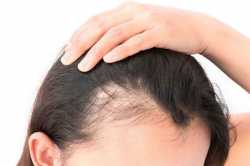Hair loss:
In males, crystallization of DHT is the culprit, along with an imbalance of testosterone if not low testosterone. When there's more DHT than testosterone in the body you end up sweating it out. Low blood flow areas, such as the scalp, don't sweat it out well, which can cause the DHT and other things you sweat out to crystalize. This crystallization will eventually damage the hair follicle until it no longer grows hair.
In females, high levels of either DHT or DHEA can cause balding, which is often due to Congenital Adrenal Hyperplasia (CAH) or Polycystic Ovary Syndrome (PCOS), with PCOS being the female phenotype expression of male pattern baldness, both of which are caused by excess estrogen via metabolic dysfunction. CAH or PCOS lead to adrenal glands producing too much DHEA, which converts into DHT locally through the androgen backdoor pathway.
Both PCOS and CAH are congenital, PCOS in particular causes the production of more androgen in the ovaries, both of which often go hand-in-hand with hyperinsulinemia, hypercortisolism and metabolic disease. Prolactin is also the death of hair when it's too high.
This can be fixed with bicalutamide. Though, high prolactin may require something else.
Also, poor nutrition (i.e., eating plants instead of meat) and birth control will often induce hormonal imbalances with the correlated hair loss or thinning in women, and ponytails will induce traction alopecia.
Alopecia is a different situation, because it's mostly caused by various forms of ringworm, which often derives from weakened immune systems and poor hygiene. Alopecia is 100% treatable with basic anti-fungal medications and proper hygiene.
Also, PRP and PRF shots into the scalp work well on males and females.

